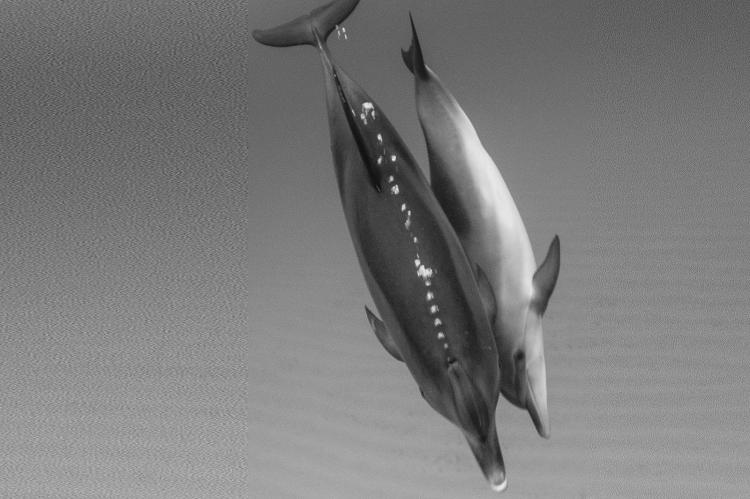Dolphins use names among themselves
Bottlenose dolphins can use copying of signature whistles as a way of addressing or labelling animals on an individual basis. In other words, they appear to be calling each other by name.
In animal communication research, vocal labeling refers to incidents in which an animal consistently uses a specific acoustic signal when presented with a specific object or class of objects. Labeling or naming is one of the describing features of human language. Although the widespread use of alarm and food signals in animals gives the impression of labeling, the structure of these signals is usually predetermined from birth. A cognitively more complex use is when labels are acquired through learning.
Unique identity signals
Bottlenose dolphins develop their own unique identity signal, the signature whistle. A signature whistle is a learned, individually distinctive whistle type in a dolphin’s repertoire that broadcasts the identity of the whistle owner. This whistle encodes individual identity independently of voice features. The copying of signature whistles may therefore allow animals to label or address one another. Bottlenose dolphins therefore appear to be unique as nonhuman mammals to use learned signals as individually specific labels for different social companions in their own natural communication system.
Simllar to human names
As infants, bottlenose dolphins develop their own signature whistles to use throughout their lifetimes. Group members repeat these whistles back during vocal interactions, forming a system similar to that of human names, marine biologists at the University of St Andrews found already in 2006.
Further research by this and other teams went to show signature whistles form an important and stable component of an individual’s vocal repertoire but dolphins are capable of vocal learning throughout their lives and individuals can copy the signature whistles of others. This development is influenced by vocal learning, with animals often using calls heard in the environment and modifying them to create a novel and unique pattern.
In isolated dolphins, the signature whistle accounts for close to 100% of all whistles produced. In wild groups, however, only around half of whistles are signature whistles; the rest are other shared whistle types. Animals that meet at sea tend to exchange signature whistles before they join each other.
Source: National Academy of Sciences





























